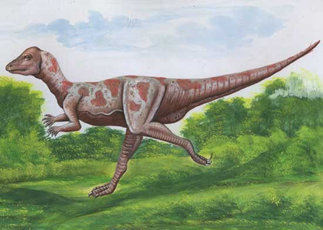
Micropachycephalosaurus Dinosaur meaning "small thick-headed lizard," is an intriguing dinosaur species that lived during the Late Cretaceous period, approximately 75-71 million years ago. It belongs to the group of herbivorous dinosaurs known as pachycephalosaurs, which are characterized by their thickened skulls and dome-shaped heads. With its unique features and adaptations, Micropachycephalosaurus offers valuable insights into the diversity and behavior of these fascinating dinosaurs.
Micropachycephalosaurus was a small dinosaur, estimated to have reached lengths of about 6 feet (2 meters) and weighing around 20-30 kilograms. Its most distinctive characteristic was its thickened skull, which featured a rounded, dome-shaped crest. This cranial structure was composed of dense bone and likely served as a protective feature during intraspecific combat, where individuals engaged in head-butting behaviors to establish dominance or defend territories.
Micropachycephalosaurus Facts :
| Name: | Micropachycephalosaurus Dinosaurs |
| Size: | 2 meters |
| Main Facts: | Micropachycephalosaurus, meaning "small thick-headed lizard," is an intriguing dinosaur species that lived during the Late Cretaceous period, approximately 75-71 million years ago. |
Despite its name, Micropachycephalosaurus did not possess the robust body or thick bones commonly seen in larger pachycephalosaurs. Instead, it had a relatively slender build and was likely agile and swift on its feet. Its forelimbs were shorter than its hind limbs, indicating it was primarily a bipedal dinosaur. The teeth of Micropachycephalosaurus were small and leaf-shaped, indicating an herbivorous diet. It likely fed on low-growing plants, such as ferns, cycads, and other vegetation abundant in the Late Cretaceous environments.
Micropachycephalosaurus represents an important chapter in the evolutionary history of pachycephalosaurs. Its unique skull structure and small size provide insights into the variation and adaptations within the group. Though our knowledge is still limited due to the scarcity of fossil remains, ongoing research and new discoveries will continue to expand our understanding of Micropachycephalosaurus and its significance in the Late Cretaceous ecosystems.